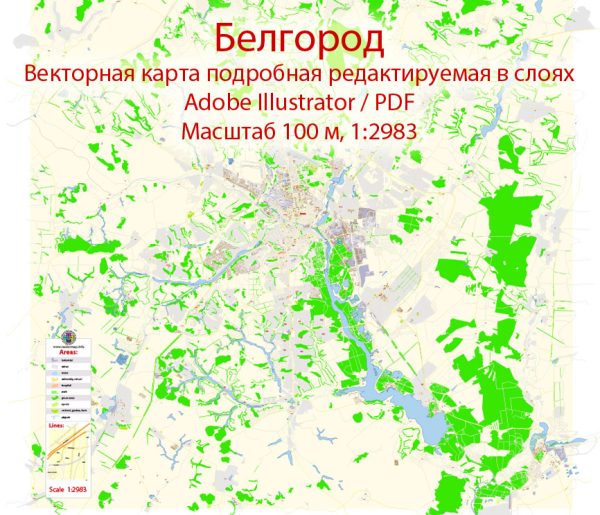Belgorod, located in southwestern Russia near the border with Ukraine, has a rich history of urban development that spans several centuries. Here is a brief description of the city’s history of urban development:
- Early History: Belgorod’s history dates back to the 16th century when it was founded as a fortress on the southern border of the Russian state. The fortress served as a defense against various nomadic tribes and played a crucial role in protecting Russian lands. It was strategically located along the Belgorod Defensive Line, which was part of a network of fortifications built to protect the southern borders of Russia.
- Growth and Development: Over the years, Belgorod grew as a trading and administrative center, and the fortress played a significant role in the region’s development. It became an important stop on trade routes and gradually evolved into a vibrant urban center.
- 19th Century: In the 19th century, Belgorod continued to expand and develop. The construction of railways in the region further boosted the city’s importance as a transportation hub. The city’s economy diversified, and it became known for its trade, agriculture, and light industry.
- Soviet Era: The 20th century brought significant changes to Belgorod. During the Soviet era, the city saw rapid industrialization and urbanization. New industries were established, and the city’s population grew as people moved from rural areas to work in factories and institutions.
- World War II: Belgorod was heavily affected by World War II, with the city being occupied by German forces from 1941 to 1943. The city was almost completely destroyed during the war, but after its liberation, it went through a period of post-war reconstruction and recovery.
- Post-Soviet Era: With the dissolution of the Soviet Union in 1991, Belgorod, like many other Russian cities, faced economic challenges and changes in its political and social landscape. However, the city has managed to adapt to these changes and has continued to grow and develop.
- Modern Belgorod: Today, Belgorod is a thriving regional center with a diverse economy, including agriculture, manufacturing, and education. The city has a well-developed infrastructure, including schools, universities, healthcare facilities, and cultural institutions. Belgorod’s urban landscape has also evolved, with modern buildings and amenities.
Throughout its history, Belgorod has gone through various stages of development, from a defensive fortress to a regional economic and cultural center. Its strategic location and role in the region have played a significant part in shaping its urban history.


 Author: Kirill Shrayber, Ph.D.
Author: Kirill Shrayber, Ph.D.